Instead of going to a crazy New Year party in Delhi this year, we embarked on another road trip – from Delhi to Gwalior. We drove early to get a headstart. The party-weary Delhi was still asleep. It was one of the coldest winter mornings in Delhi so far. Yet, the crisp breeze on our faces seemed to wake us up. We were excited to see what is special about Gwalior.
Contents
Why Gwalior
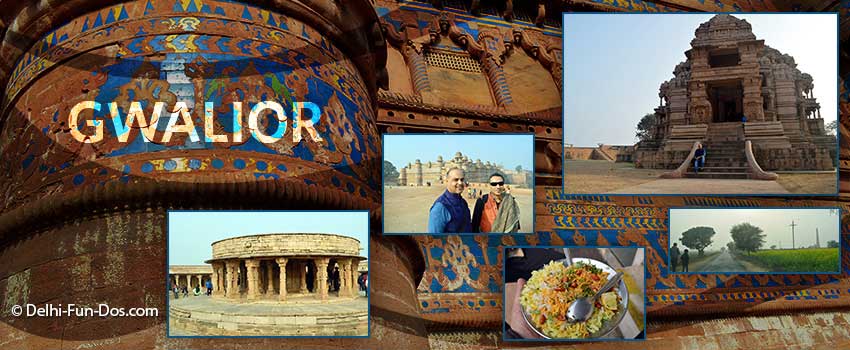
Like most Delhiites we have covered Rajasthan and popular hill stations of Himachal and Uttarakhand like Mussorie, Lansdowne, Dharamshala, Nainital & Kausani, Dalhousie & Khajjiar and some offbeat travel destinations like Shoghi and Neemrana. Hence we wanted to travel to another state.
Gwalior in Madhya Pradesh (also known as MP)is proximal to Delhi – just a 6 hours drive. However, given the severe heat, summer is not a suitable time for travel. November to February is the best time to visit Madhya Pradesh. Gwalior is about 330 km from Delhi NCR and we expected to cover this distance in about 6 hours. This seemed reasonable driving time and we zeroed in on Gwalior as a start to exploring MP.
Delhi to Gwalior
It was Friday 30th December, the last workday of the year. We had taken the day off and included this in our weekend. Fortunately, it was a clear morning and we had a head start at 7.30 am. After driving for an hour, we hit the Yamuna Expressway. There was hardly any traffic on that route and we covered a distance of 175 km in an impressive 2 hours. This also included a few stops for breakfast and stretching.
We left the Expressway from Exit 591 towards Agra. Thereafter it was Google maps all the way. We drove past Taj Mahal, Agra Fort, Dayal Bagh and resisted the temptation to stop. We entered Madhya Pradesh a little before Dholpur. It was exciting to cross the Chambal River notwithstanding that it was almost dry. Google maps went a little awry at this stretch and we followed our intuition. MP has broad and well-maintained highways. Consequently, we reached Gwalior at an impressive 2 pm.
Hotels in Gwalior
Our accommodation was booked at Hotel Surya in Indranagar. It is a decent place in what seemed like a motor parts/electrical goods market. Good that it was the New Year’s weekend and the traffic was light. Check-in – initial round of tea – and we were good to go again. Gwalior has all sorts of accommodations available for all types of budgets. From lavish Five stars to mid-level hotels to homestays, the city caters to all varieties of tourists.
Things to do in Gwalior
When we started the trip all we knew about Gwalior was the Gwalior fort and some of the famous temples. But during the trip we realised our 2-3 days are not enough to do justice to this beautiful city and there is so much to do. We managed to cover a lot in the little time we had here but we left quite a few things for our next trip to Gwalior. Here are some of the absolute must-to-dos in Gwalior.
Jai Vilas Palace – Scindia Museum
Jai Vilas Palace and H H Maharaja Jivaji Rao Scindia Museum: The Scindia Museum was very close to our hotel, a mere 7 minute walk. We started our sightseeing from this place. Housed in the opulent Jai Vilas Palace, the Scindia Museum is a private collection of the various Scindia rulers. Bizarre items such as stuffed animals, ornamental bathtubs and commodes and eight feet high incense burner fill the rooms.
The lavish dining area displayed a silver train that would carry alcohol and cigars around the dining table. We hired a guide and he took us through the various galleries such as the royal drawing room, dining rooms, living chambers, ladies’ swimming pool, artillery, and private items used by the later popular members of the household like Madhav Rao Scindia and Vijay Raje Scindia.
The museum reminded us of the City Palace in Jaipur which also houses private items of the royal family. The guided tour was about two hours. We were surprised to note that the ticket to this museum was a steep Rs. 100 (Rs 250 for foreigners), perhaps because it is a private collection. Additionally, we paid Rs 100 for photography.
Gwalior Fort
Gwalior Fort: Saturday, 31st December was the only full day that we had on hand. Given that there was a lot to cover, we started early. 15 minutes drive took us to the Gwalior Fort. Perched on a hilltop this was clearly the most popular tourist destination in Gwalior.
Gwalior has been home to various dynasties and the magnificent fort was a beautiful fusion of diverse influences. In contrast to forts in Rajasthan, the Gwalior Fort was built as the living chamber for the king and his family. The turquoise and sulphur-coloured tiles in ornamental patterns bore testimony to the fact that aesthetics was on high priority. We would have been lost without a guide and the contact numbers of the authorised guides were mentioned on a board close to the ticket counter.
We contacted one of them and he guided us for the next 4 hours or so. The good part is their charges are mentioned on the board and we paid him a very reasonable Rs. 500. The palace covers the works – royal courts, summer/winter bedrooms, music rooms, baths for the queens and dungeons. We had goosebumps when the guide took us to the room where Aurangzeb had in later years hung his brother Murad.
The sandstone detailing, the animal motif brackets, and the lattice work displaying Garba dancers are details that are treats to the eyes. We could not have enough of clicking at this palace but had to move on to the next site in this area due to time constraints. We came in the evening though for the light and sound show at Gwalior Fort. It is a 45 minutes odd narration mostly by Amitabh Bachhan and various parts of the fort facade were illuminated during the commentary. The show was not very impressive though and could have been much better.
Sahastrabahu Temple
The Sahastrabahu temple: This is a combination of two temples perhaps in the Hoysala style. Built approximately about 11th century AD, the larger temple is dedicated to Lord Vishnu while the smaller shrine is for Lord Shiva. These temples are popular as “Saas Bahu ka Mandir”.
The shrines are empty and statues here were defaced in Aurangzeb’s times. Nonetheless, the beautiful carvings seemed to have brought the sandstones to life. Set against the clear blue sky, the temples were a visual delight.
Teli Temple
Teli temple: Teli ka Mandir (Oilmen’s temple) is another famous temple adjacent to the Gwalior fort. Legend has it that the temple was built on donations by oil merchants, hence the name.
The temple is also known as Telangana Temple because of the predominately Dravidian style of architecture. This 9th-century edifice is probably the only temple in the region built in the South Indian Gopuram style. As with other temples here, this temple had to face the brunt of the Mughal invasion and the statues on the walls are badly defaced. Dedicated to Lord Vishnu, this temple is the tallest among all other temples here. A part of the temple was under restoration when we went.
Archaeological Survey of India (ASI) has been entrusted with the upkeep of all the temples here. Although much of the carvings have not stood the test of time, it is because of ASI, the structures of these ancient magnificent monuments have been kept intact.
Rock Cut Jain Colossi
Rock Cut Jain Colossi: We were aware of the forts and palaces in Gwalior. The Jain sculptures were a total surprise. On the way up from the plain to the fort hillock, there are these rocks on both sides embellished with magnificent statues of Jain prophets and other iconography. When we saw these we were absolutely bowled over and our jaws dropped with awe.
These Digamabar Jain statues established that there was a thriving Jain religious order in this state. The walls also had a few small carvings depicting Hindu deities. This place looked like a highly well-made set from an Indiana Jones movie.
Tombs of Tansen and Mohammad Ghaus
Tombs of Tansen and Mohammad Ghaus: The tombs of Tansen and his guru Mohammad Ghaus are located in a very busy market area. When we were directed to this narrow lane we thought people did not understand us. Mohammad Ghaus tomb is a magnificent marble structure that is covered with intricate latticework. It’s a neat place and a Moulavi was present inside to help devotees.
His most celebrated pupil Tansen’s tomb was comparatively unassuming-an open structure erected on pillars. The beautiful lawns outside seemed like a popular hangout in the neighbourhood. However, this site didn’t seem to be very popular with tourists.
Mitawali
Mitawali – We had kept the last day of our Gwalior trip for the return journey and the shrine Ekattarso Mahadev temple. We had read that the Indian Parliament House has been designed in line with this temple. It, therefore, seemed to be worth the effort to make a detour of about 40-50 km for visiting this place.
Google maps took us through typical villages as well as industrial zones and just when we were starting to doubt the directions, we saw this crown-like structure atop a hill. It took us about an hour from Gwalior to reach this place. Notwithstanding we were coming from a city of mausoleums it seemed as if we have been transported to another world.
This temple deserves a little description. It is a circular structure with embellishments on the outer wall. Inside the temple there were chambers on the wall as well as a sanctum sanctorum at the center. This is typical of a Yogini Temple and there are only a few of these temples around the world. The temple reminded us of the Colosseum in Rome. We could clearly see the resemblance of the Indian Parliament House with this temple.
Unfortunately, this seems to be one of the sites that are neglected by the authorities. Consequently, the place was swarming with New Year revellers caring two hoots about the sanctity of this place of history. It appeared that ASI has done its bit to maintain the structure. They have also placed cylindrical stones inside the shrines that people worshipped as Shiva Linga. If these stone menhirs are placed elsewhere maybe the temple would be maintained as an archaeological site.
Things to eat in Gwalior
Food in Gwalior is quite like what we find in Delhi NCR. This place is high on the street fare and almost every nook and corner was dotted with food carts, mostly of the desi variety. We tried a few options:
S.S. Kachoriwala
S. Kachoriwala: Located at a busy intersection, this shop was selling kachori, bedai (known as bedmi poori in Delhi, Rajasthan), samosa, pakodi, jalebi etc. We tried the kachori and bedai which were served in leaf cones. The watery aloo sabzi was pored over the kachoris and topped with sweet and green chutney.
The soggy kachoris have to be had with hands. There is no sitting arrangement and we found lines of people standing outside patiently awaiting their serving. And we found them licking their fingers later. Every item was Rs 10 per piece. Our whole breakfast was done in neat Rs. 90/-
India Coffee House
One of the 400 outlets of the legendary Indian Coffee house is located in Gwalior. This was our last day in Gwalior and we decided to have breakfast at Indian Coffee House. Luckily this was en route to our next destination in Gwalior – Tansen Tomb. Indian Coffee house here is adjacent to the Railway station and the parking is on the other side of the road. This Gwalior outlet has retained that typical character of any Indian Coffee House. The smell of South Indian food, snooty waiters dressed in white with noticeable white turbans and the usual crowd and noise of diners.
South Indian food is the safest bet while eating at Indian Coffee House. So we ordered filter coffee and masala dosa. Both were good with their simple and basic taste. We also ordered a plate of egg sandwiches that we loved the most here.
Since we decided not to have lunch, we thought of having a heavy breakfast than usual. We ordered chicken sandwiches after this and this mistake cost us a good 45 minutes. The waiter didn’t tell us that this is going to take that long and we kept waiting for our order. When chicken sandwiches arrived the chicken was uncooked and the sandwiches were no good. This somewhat spoiled our experience of eating at the Indian Coffee House. We bought packets of their filter coffee on our way out.
Aggarwal Poha Bhandar
Aggarwal Poha Bhandar: Just like Mount Abu, poha – the humble Gujarati flat rice dish is a popular breakfast item in Gwalior. There are many APB in Gwalior and we didn’t know which one to try. We just trusted our gut feeling and tried poha at one of the shops.
The poha was freshly made, subtle in taste, slightly sweet and topped with peanuts, coriander leaves and a lemon wedge. We just loved it. We also tried their dhokla which was slightly different in taste than dhokla in Delhi and we liked it as much as poha.
Chaupati
Chaupati: We were surprised to hear about Chaupati in Gwalior. Somehow we always relate this name with Mumbai. Our guide at Gwalior Fort mentioned that Chaupati would be a nice place to hang out on the 31st night. We took his word and visited this place late evening.
Chaupati here is an open area with food carts selling street food like gol gappe (the long oval variety), karela, tikki choley, dahi bhalla etc. Karela (the chaat variety not to be mistaken with the vegetable) used to be a regular item in Delhi years back and now have disappeared totally from Delhi food scene.
This fried, white flour-based dish is in the shape of a karela (bitter-gourd). They break it inside a paper bowl (dona) and serve it with chutneys and spices. The taste was average but we liked it for the sake of nostalgia. Some permanent shops here serve Chinese food and the regular Delhi variety of fast food like noodles, egg rolls, burgers etc. The atmosphere at Chaupati was very casual and gangs of bikers and families were having a good time gorging on pocket-friendly street food. Parking is in an open field and free of charge.
Morena
Muraina (Morena) ki gajak: What panchi petha is to Agra, Muraina gajak is to Gwalior. Be it Naya Bazar or Dal Bazar, one can see lines of shops selling Morena ki Gajak. Muraina is a small town near Gwalior and Gajak from this place is famous all over India. We saw some shops near Railway Station opposite Indian Coffee House and bought boxes of several varieties of Gajak for friends and family.
The quality was much better than what we get in Delhi and we are happy that we shopped for Morena ki Gajak from here.
SHOPPING IN GWALIOR
Mriganayani: On the topic of shopping, given the long history of royal patronage from various dynasties, Madhya Pradesh is extremely rich in crafts, particularly handloom as well as block printed fabrics. Mriganayani, the Madhya Pradesh Government crafts store in Gwalior was a treasure trove of fantastic weaves such as Chanderis, Maheshwaris and Bagh printed saris, dress materials, and scarves etc.
They also carried a host of woodcraft, beautiful stone carving and durries at the craft section on the first floor. Surprisingly the handloom section accepted debit/cards but the craft section insisted on cash notwithstanding the recent demonetization drive. That was the only dampener in our experience. The Mriganayani here is much better stocked than the one at Rajiv Gandhi Handicrafts Bhawan.
We bought Bagh print tussar sarees, Chanderi suit material, Maheshwari scarves, block printed cotton fabrics as well abstract stone busts, and wood accessories as gifts and souvenirs.
Is Gwalior worth visiting?
Gwalior was one of the most beautiful cities in Madhya Pradesh that we visited. It oozed history. The beautiful Gwalior Fort blew us over. And then the huge Jain rock sculptures gave us goose-bumps. Given that the legendary singer Tansen was born in Gwalior, it was unparallel in the arts. Throw in the amazing street food of Gwalior and rich handicrafts and textiles, Gwalior was like culture travel into the heart of Madhya Pradesh.
Although it was just a weekend trip from Delhi, we did so much. It seemed like we were on a vacation to Gwalior. It was precisely like – “Hindustan ka dil dekho” advertisement by MP Tourism. So yes, Gwalior indeed is worth a visit.
PIN FOR LATER READ
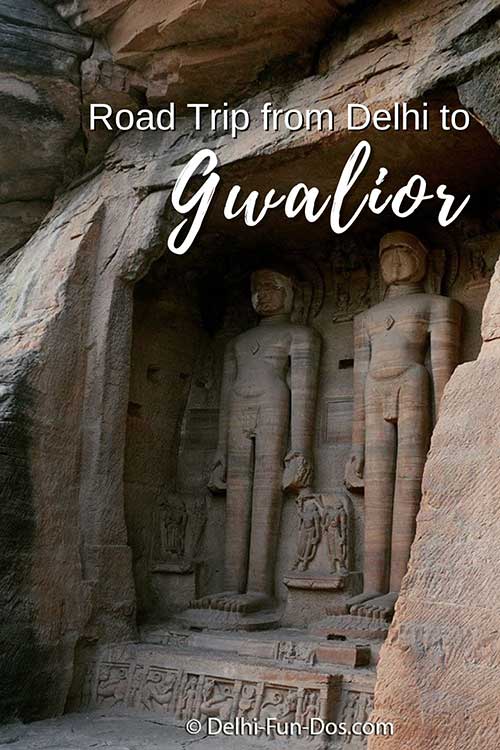

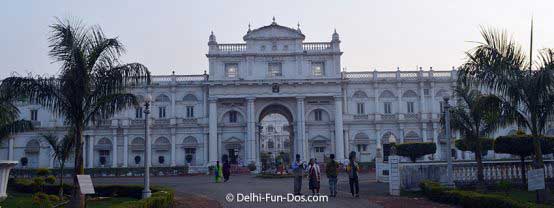
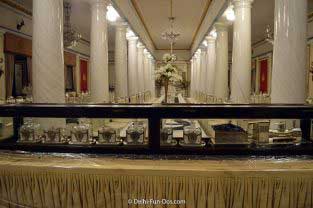
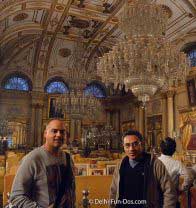
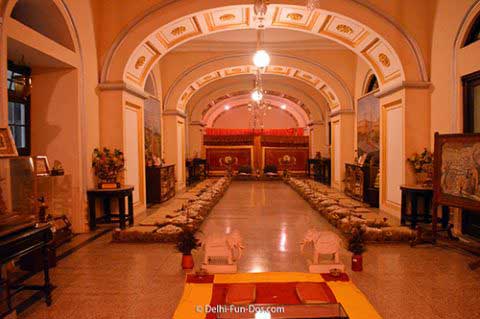
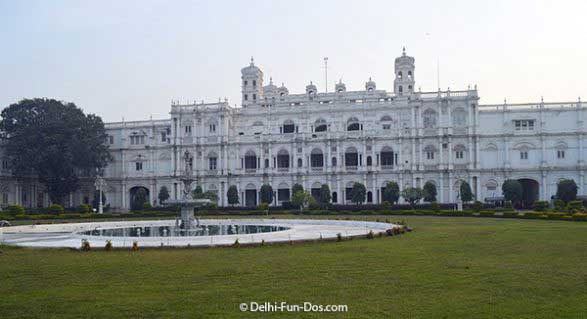
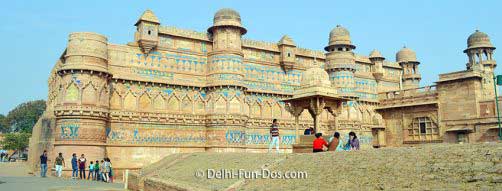
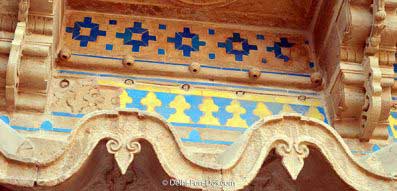

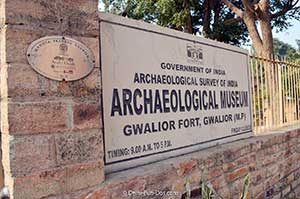
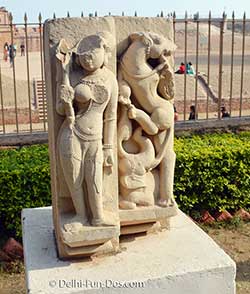
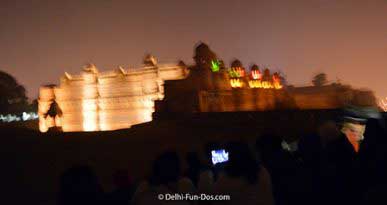
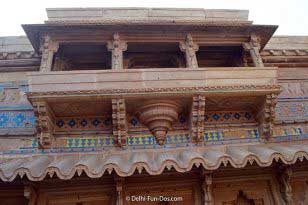
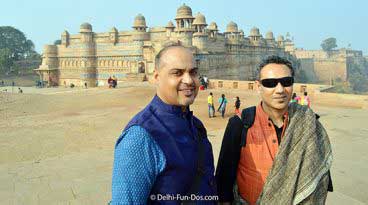
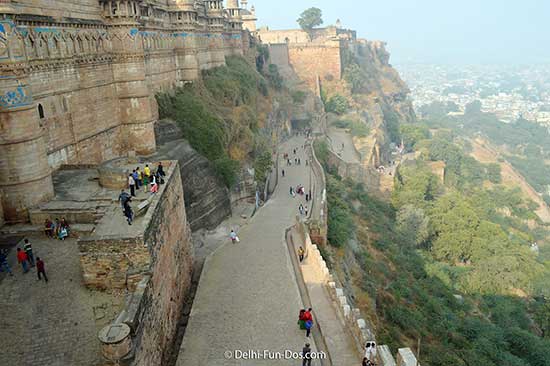

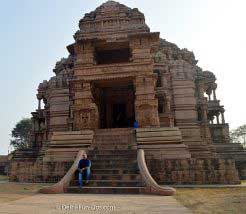
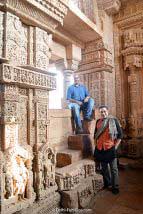
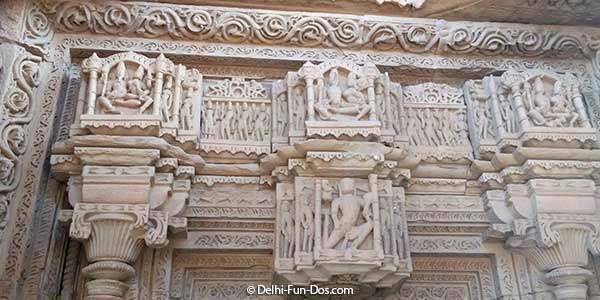
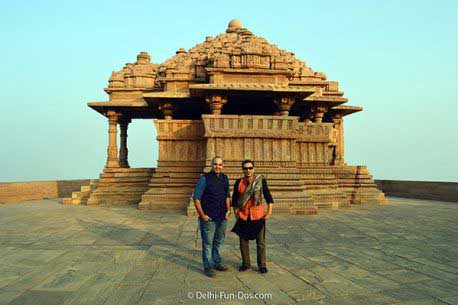
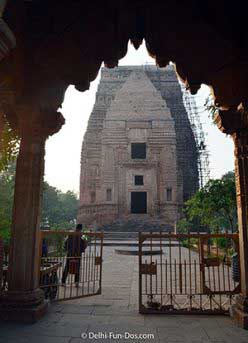

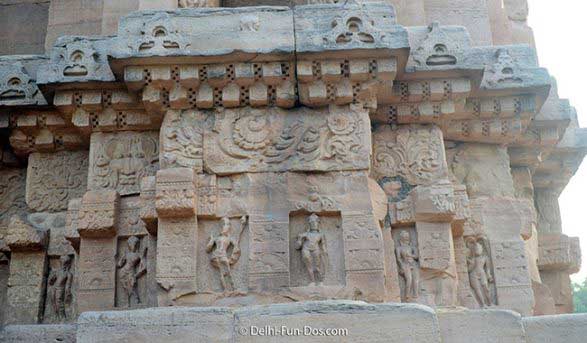

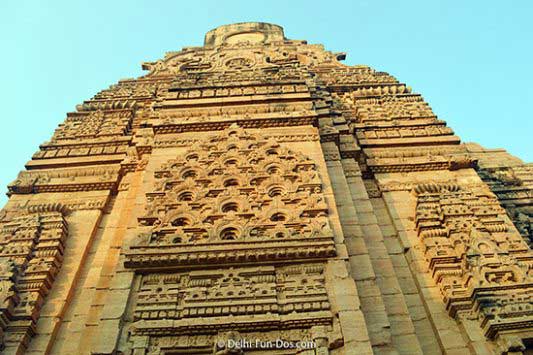
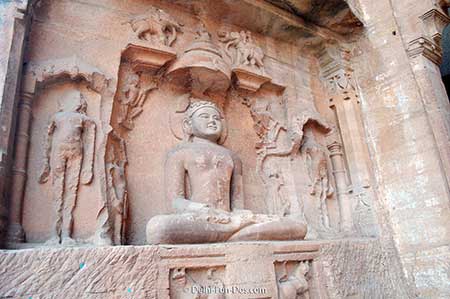
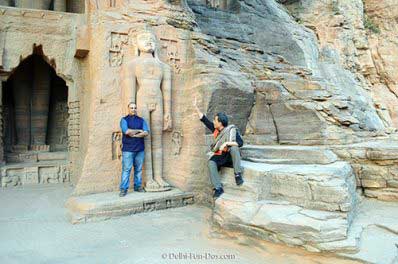
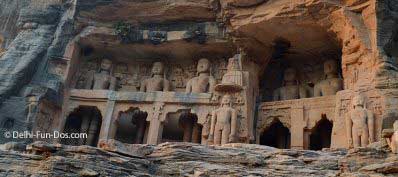


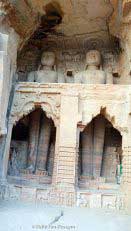
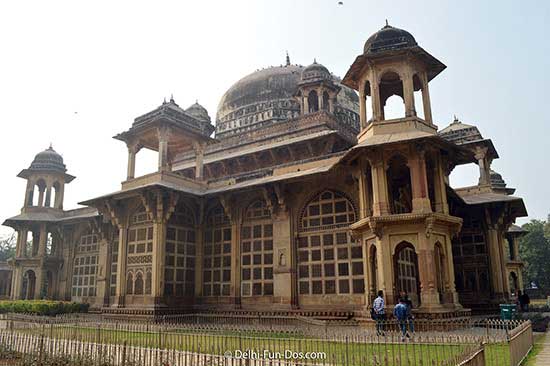
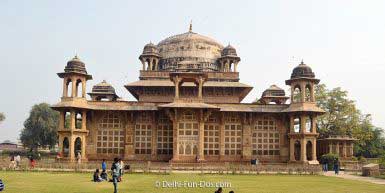


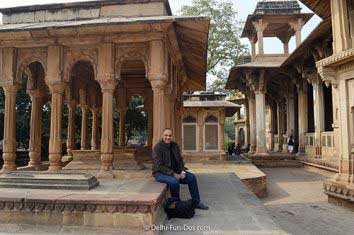
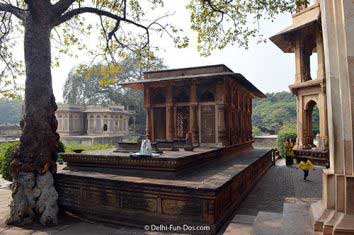
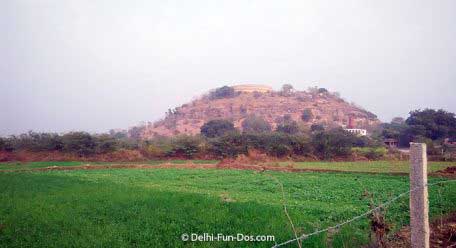
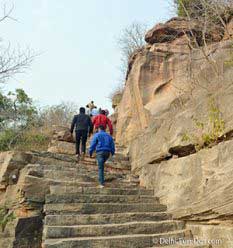
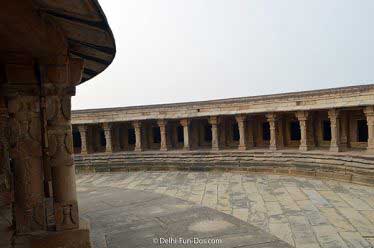

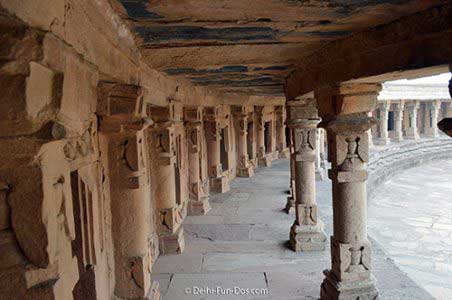
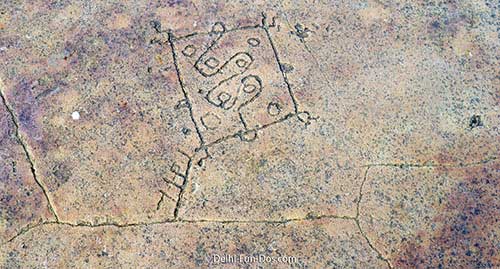
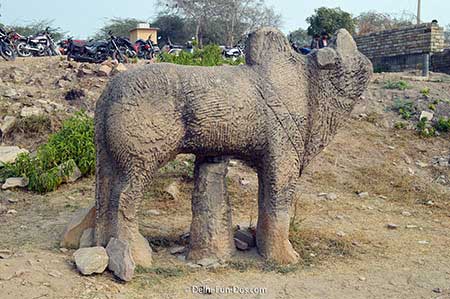


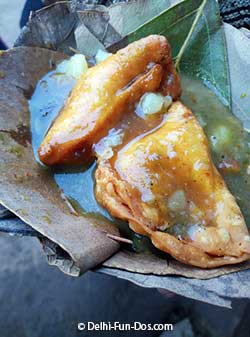
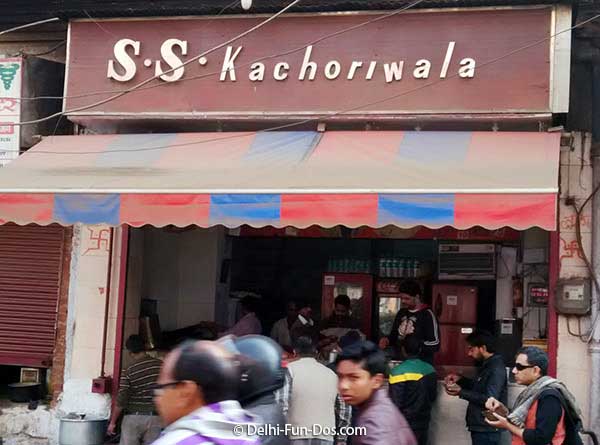
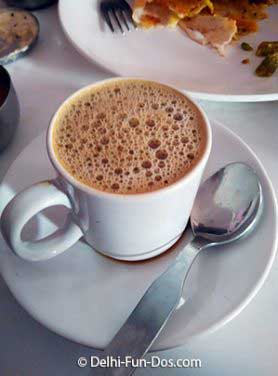
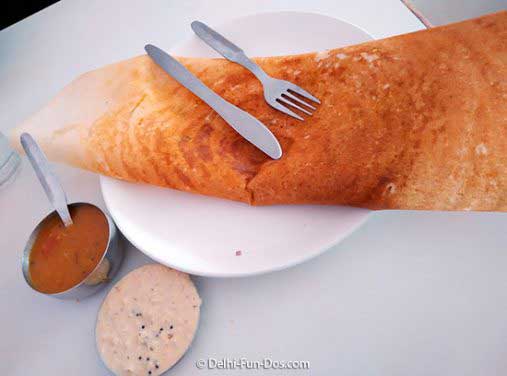


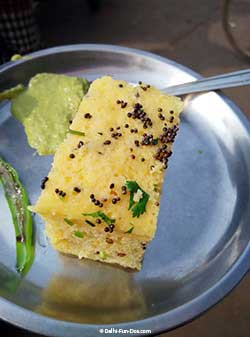
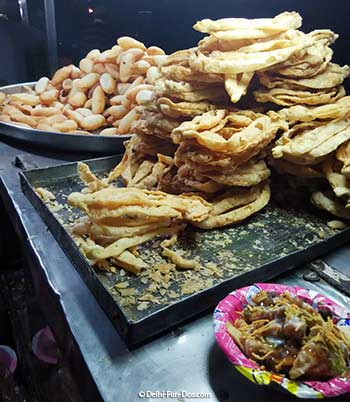
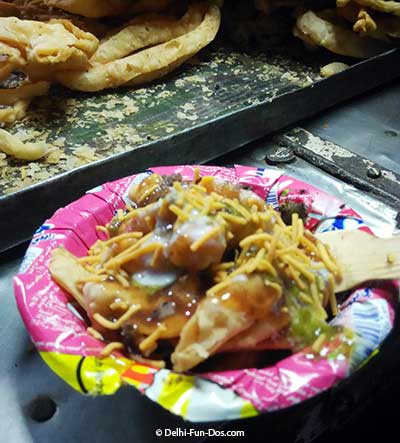
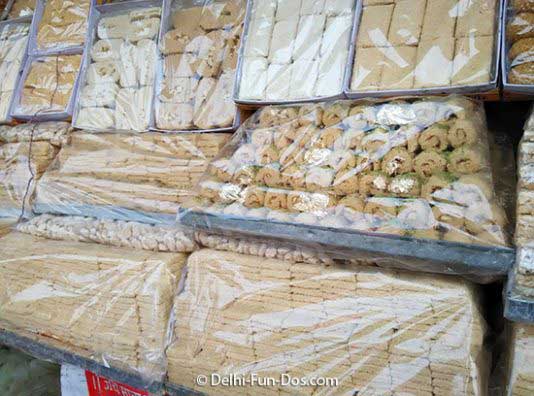
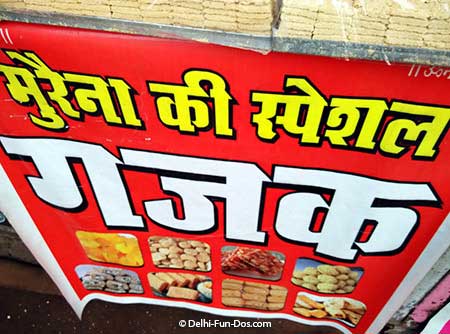
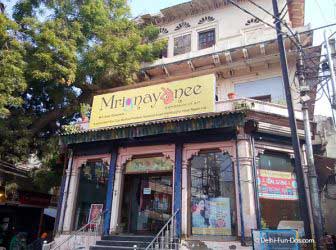

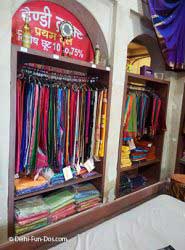
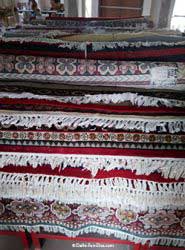
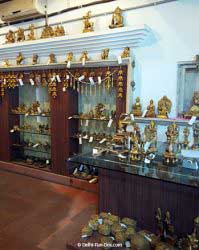
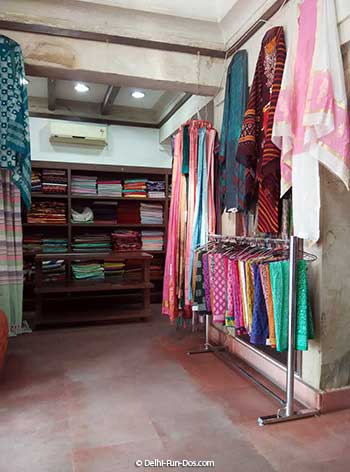

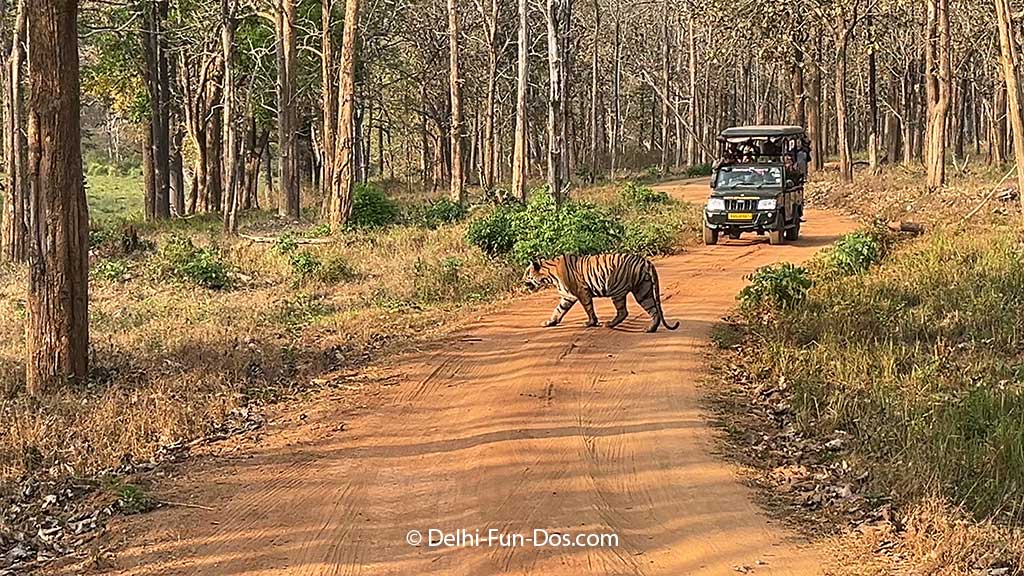
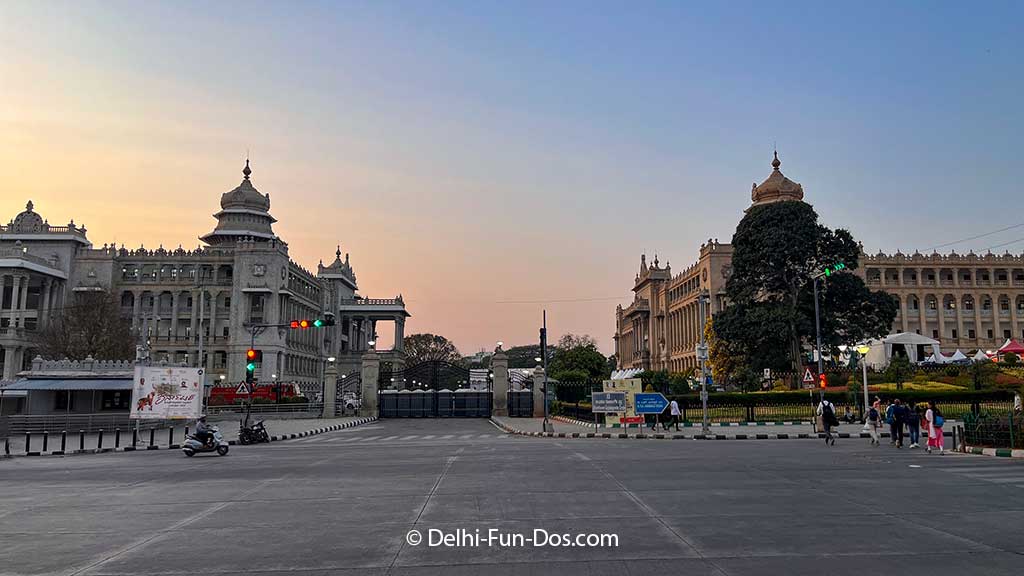
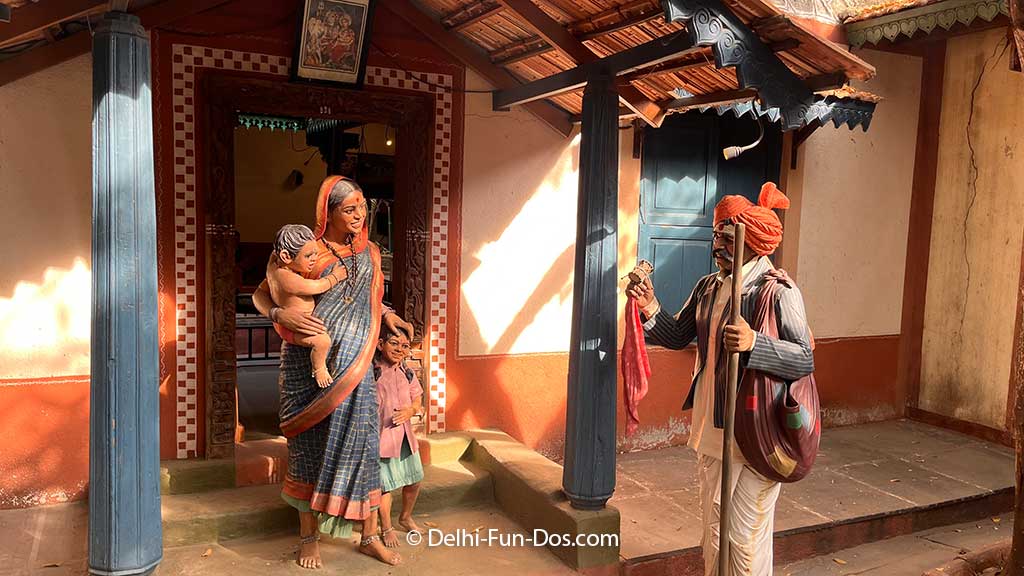
You describe so beautifully with amazing pictures that I wish I able to visit there & see everything live.
Gwalior is awesome and a glowing gem of Indian Heritage. Gwalior is a place that we have missed visiting and we hope to do so as soon as possible. One of the places we really look forward to visiting in Gwalior is Mittawali.
Road trips are wonderful, have some too. Gwalior is a wonderful place to be, will surely save this post for future reference.
Wow, this seems like one amazing trip that you had from Delhi to Gwalior and got to visit such amazing places as well. Loved the historic pictures shared in this post.
If you think Madhya Pradesh, you think Kanha or Khajuraho. But Gwalior was such a discovery. Reading the post and looking at the photos, feel like doing it all over again.
The history of Gwalior is really enchanting, and the local food pictures are making me add Gwalior in the list and meet my old friend from this place.
I am yet to visit Gwalior and I was planning to go this January but couldn’t go. Hopefully soon now as second wave is almost gone now. I will refer your post again before visiting gwalior.
to be honest, gwalior was never on my travel wish list! however, reading through your experiences and seeing the lovely photographs, I wish to travel and visit here too. Enjoyed reading about your trip.
I am tempted to visit gwalior soon this lock down opens. Fantastic detailing.
My favorite place is Gwalior has to be the fort. Thank you for such a visual trip down the memory lane of this wonderful place.